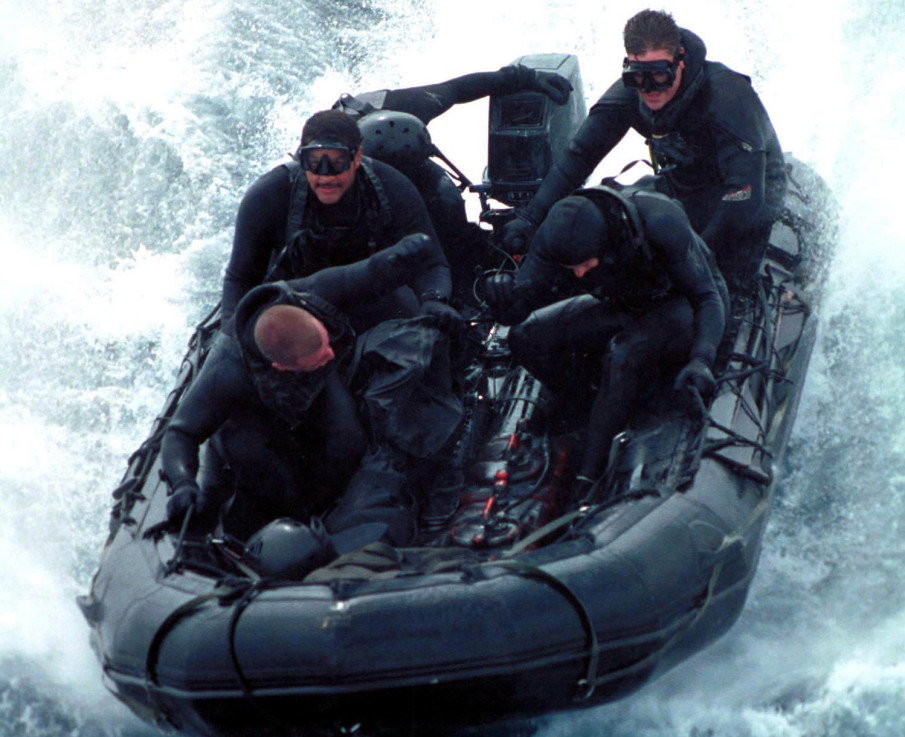What to make of this latest June 6th, 2015, article in the New York Times, detailing the “secret history” of SEAL Team 6? I am torn between writing about the subject and ignoring it. Instead, I will refrain from addressing the details of the Times’ article, but instead comment on the meta aspect of the story. In other words, how did this article come to be written? And why?
The answer to the ‘why’ is fairly obvious. Many people these days have an insatiable appetite for all things special operations, especially, it seems, those stories that involve the Navy SEALs. I get that. Hell, I am a former SEAL, writing this article on a website started by a former SEAL, that caters to just such a predilection. I obviously get it.
Into the mirror gaze I, describing for all what there I see.
So the Times story has all the makings of a spec-ops spy thriller. There are commandos (though, we are told, they do not like to use that term) ‘soaked in blood that was not their own,’ black ops, ‘advanced force operations’ teams, the CIA-SEAL “Omega Program,” and custom-made tomahawks, for Christ’s sake.
‘Quiet Killings and Blurred Lines,’ indeed.
What more does the average special operations aficionado need? This story has it all and is what most of us Americans probably hope is actually happening in the war on terror. We hope that our Special Operations Forces are taking the fight to the enemy, and doing it convincingly and overwhelmingly.
The story is as sexy as they come, a virtual Scarlett Johannson of words, paragraphs, graphics, and anonymous sources. The article is peppered throughout with pictures of weapons (German-made rifles equipped with suppressors, oh my!), maps detailing specific missions, and stock spec-ops cool-guy shots, like SEALs rappelling from helicopters and shivering BUD/S students.
Even Richard Marcinko makes an appearance, and there are harrowing details of raids and rescue missions, of Somali pirates, of al-Qaida terrorists and Taliban.
Hell, there is even a satellite photograph of the purported SEAL Team 6 headquarters building in Virginia Beach, annotated and labeled. I would argue that including that particular piece of information—whether it be verified or not—went a bit too far, to say the least.
Honestly, who does not want to read this stuff? I mean, this very website caters to just such a desire to be regaled with the exploits of our most elite forces. Who are we to cast stones, after all?
In other words, we understand why the article was written. But how?
The authors claim that the piece is drawn from “dozens” of interviews with both former and current team members and “other military officials,” as well as reviews of unspecified government documents.
This is far more troubling than the ‘why.’ A group of people—mostly anonymous sources—chose to describe these operations, groups, and teams, and to reveal the locations of the bases and such. Again, who am I to question why they would do that, one might ask. Do I not, also, reveal classified stories, operations, and details on the locations of bases on this very website?
Well, the answer is no, I do not. I do not because to do so might compromise ongoing operations. Furthermore, I am forbidden from doing so, in many cases, by non-disclosure agreements and by the classified nature of the information. In other words, sometimes you have to choose not to reveal information, even though the appetite for it is huge, and you might want to share certain details with the world.
We get it here at SOFREP. People want to know these details, and hear the exploits of our Special Operations Forces, and what they do on our behalf against our nation’s enemies. We do our best to provide as much insight as we can without violating our agreements and the classified nature of certain information.
Sometimes, though, it is simply not beneficial to those operations to reveal certain details. Their revelation might very well compromise the continuation of such operations. That is where the line should be drawn. It should also be drawn at revealing the locations of bases and facilities that are purposefully kept secret, both to protect the identities and security of those personnel who continue to work there, as well as the operations carried out from there.
So, now we know the ‘how’ and ‘why’ the Times ran the article on SEAL Team 6. The publishers and editorial staff would probably use such terms as “for the public good,” and the American people’s “right to know what is happening on their behalf” in the War On Terror, and other such noble-sounding phrases. Don’t buy it.
Like everyone else in this business, they are selling a sexy story, and what is sexier than that particular subject? Not much.










COMMENTS
You must become a subscriber or login to view or post comments on this article.